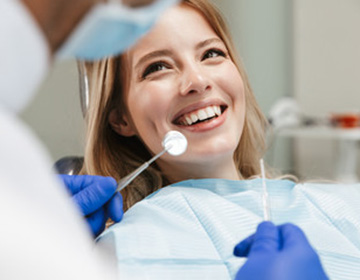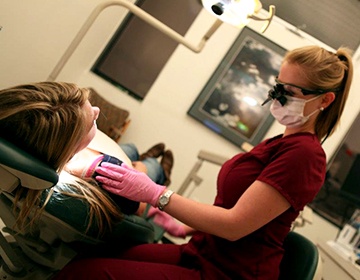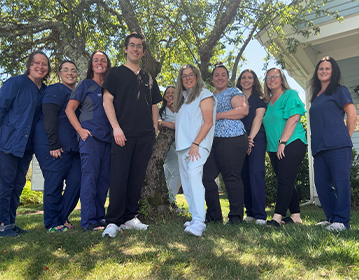Late Appointments


Exceptional Service


World-Class Dental Team


Buzzards Bay Dentists
At Canal Side Family Dental, we’re proud to offer patients the time-tested clinical expertise of our doctors who work together closely to ensure an outstanding care experience. Lead by Dr. Adelstein, our dentists provide their own unique skillsets and passions to the table here in Buzzards Bay. We can’t wait to introduce you to our personalize approach that emphasizes comfort and satisfaction every step of the way through treatment.

Our Dental Patients Love Us


"Always a pleasant experience when I visit Canal Side Family Dental. The front desk staff are warm and
friendly. My hygienist is personable and efficient. My dentist and his assistant are friendly. Moreover
the dentist explains in detail the procedure to be performed. Great dental practice."
![]() Buzzards Bay, MA
Buzzards Bay, MA
"I've been going to Canal Side Family Dental for many years now. I've always been happy with their work,
and professionalism."
![]() Wareham, MA
Wareham, MA
"Wonderful staff, above excellent care!!!"
![]() Bourne, MA
Bourne, MA
Our Dental Team Goes Above & Beyond
You deserve to feel relaxed and right at home at your chosen dental office, and our amazing staff members go a long way towards helping make this a reality here in Buzzards Bay. Not only is everyone highly trained and kept up-to-date on the latest advancements in dentistry, but we also believe in providing one-on-one attention during the appointment process that’s always kind, respectful, and focused on your specific needs. Simply put, we love getting to know you!
Our Featured Dental Services

Dental Insurance & Financing
When choosing the right dental office for yourself or your family, excellent care and good prices shouldn’t have to be mutually exclusive. Canal Side Family Dental is happy to work closely with patients when it comes to the financial aspects of their treatment, explaining possible options clearly and arranging care options in budget-friendly ways.
Frequently Asked Questions
Our team at Canal Side Family Dental is excited to provide essential and personalized dental care for you and your family. Of course, if you have any questions or concerns, it’s always best and fastest to get your answers through a phone call. That said, we know some prefer to research on their own while others simply have a busier schedule than most. To help make the process easier for you, we’ve gathered some of our most commonly asked questions from our patients in Buzzards Bay. Feel free to give us a call if you don’t see the information you’re looking for!
How Do I Get Emergency Dental Care?
Firstly, notify our team right away if you suspect you have a dental emergency. Someone on our team will be able to direct you on your next best steps as well as pencil you in for the earliest appointment. Remember, however, that anything life-threatening like trouble breathing/swallowing, excessive bleeding, or a dislocated/broken jaw will require help from your local ER instead. While they won’t be completely equipped to treat dental cases, they can keep you pain-free and provide antibiotics at the very least.
Our team will be glad to address your dental situation afterward, and we welcome same-day visits while also offering evening appointments. Most dental emergencies are preventable, so you’ll want to ensure that you practice great oral hygiene as well as visit your dentist every six months, that way you can avoid complications and save money in the process.
How do I request a ramp for access to the office?
We are a handicap-accessible and wheelchair friendly office. If a ramp is needed, please call our office and give our staff a 24- hour notice.
How Do I Find the Best Place to Get Dental Work Done?
To find the ideal spot to undergo your dental care, you’ll need to consider what is important to you. This can include a combination of factors like hours, insurance, credentials, location, safety, and cleanliness. You should also think about the kind of dental services you’re looking for, such as Invisalign for straighter teeth, dental implants to replace missing teeth, emergency dentistry, or veneers to upgrade your smile. Furthermore, you should get a feel for the dental team you’ll be working with to see how they operate. For instance, our practice focuses on personalized care for patients of all ages, and we want to ensure everyone gets the treatment they need to achieve the smile they deserve.
How Much Does it Cost to Get a Tooth Removed Without Insurance?
On average, the cost of tooth extractions across the United States can usually go anywhere between $150 and $400. Of course, this will depend on various factors, including geography and the person’s dental health. You might also encounter additional fees based on the difficulty of the extraction process and any other procedures that might be required. Patients with dental insurance might expect a certain amount of the cost of their treatment to be covered based on what was negotiated between their provider and the dentist.
What Do You Do If You Can’t Afford a Dentist?
Remember that dentistry is mainly about prevention, so practicing daily oral hygiene and visiting your dentist biannually for checkups is the best way to save money in the long run. Our team is in-network with several dental insurance providers and would be happy to help you maximize your benefits if you have a policy. Fortunately, our team also offers special periodic promotions that can help lower the amount you’ll have to pay for certain treatments. You can even sign up for our Essential Dental Plan for discounts on various services or finance your care through CareCredit for low-to-no-interest monthly payments—both of which can help minimize your out-of-pocket expenses!







